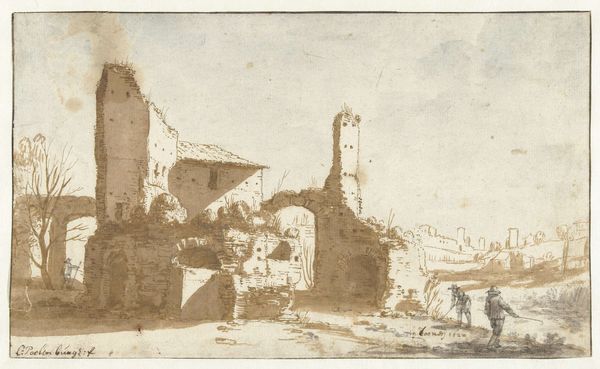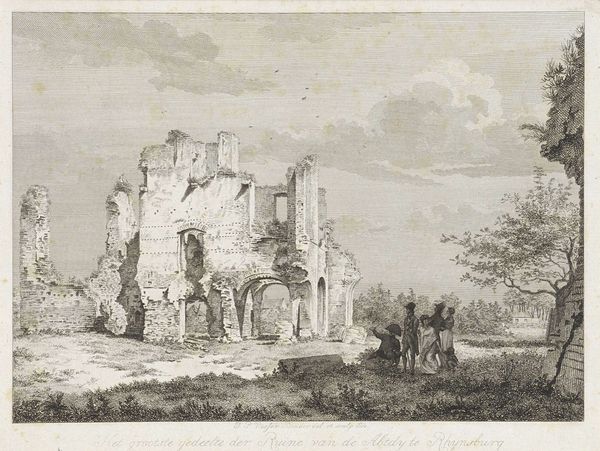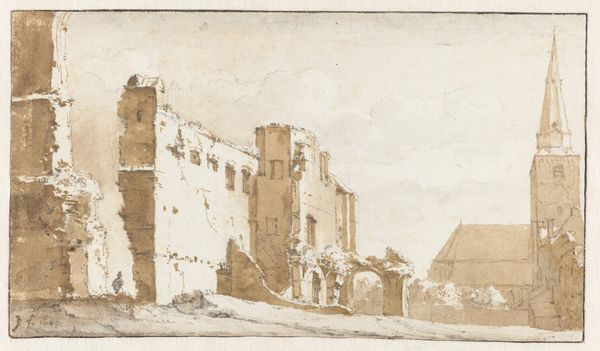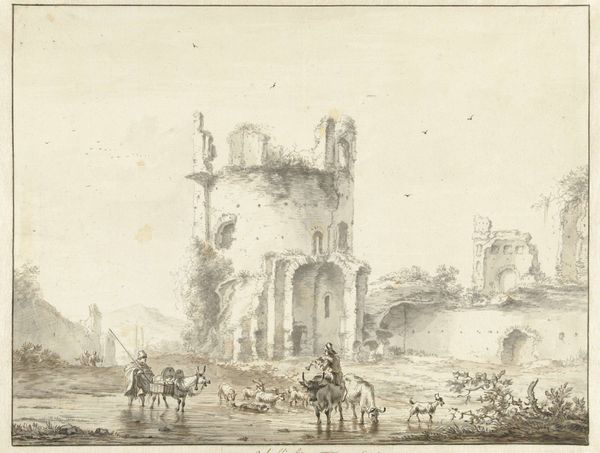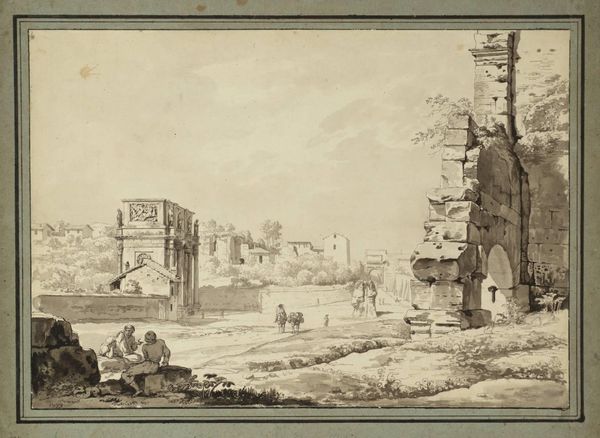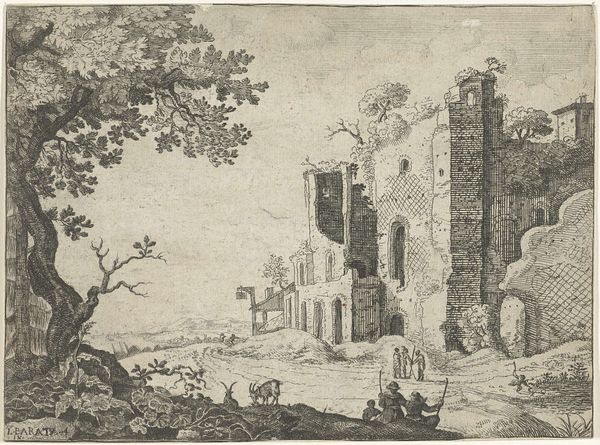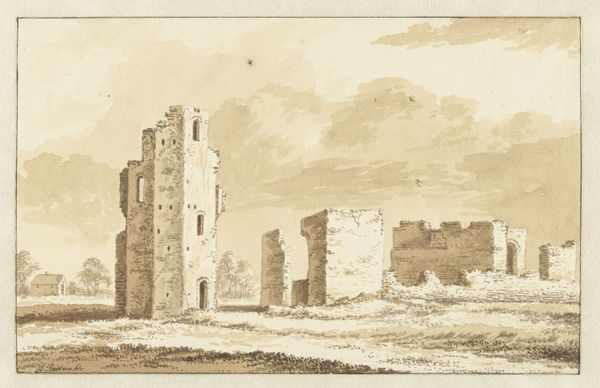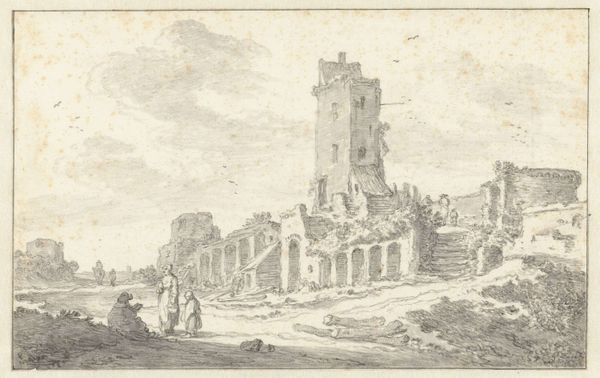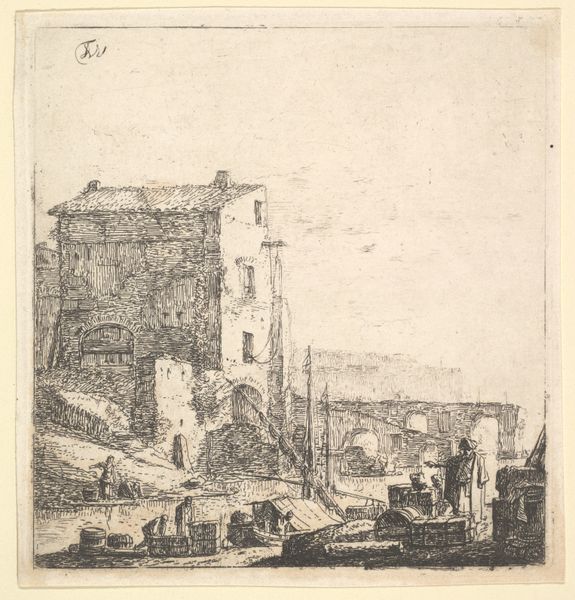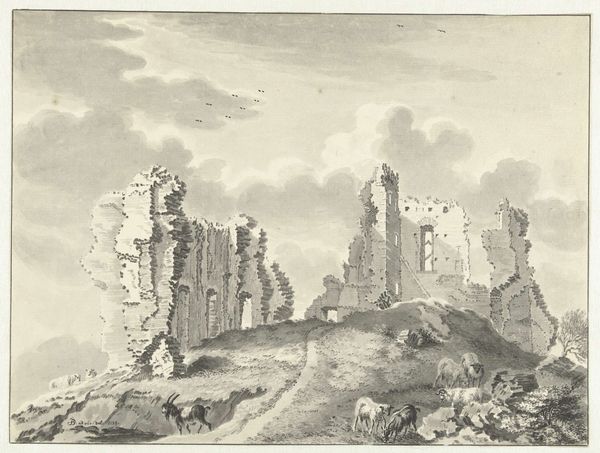
painting, watercolor
#
painting
#
landscape
#
watercolor
#
romanticism
#
cityscape
#
watercolour illustration
#
watercolor
Dimensions: height 174 mm, width 260 mm
Copyright: Rijks Museum: Open Domain
Curator: Soaked in melancholy and light, we’re looking at John Varley's "Lindisfarne Abbey on Holy Island, Northumberland," a watercolor from 1830. Editor: It looks…ancient. Beautifully so. There’s something so gentle and decaying in the scene. All softened edges and whispery colours. Curator: Lindisfarne Abbey has a rich history dating back to the 7th century, becoming a significant religious center before falling victim to Viking raids. The Romantic era saw a renewed interest in ruins as symbols of the past. Editor: Right, like the sublime experience of time, or something. You see these gorgeous arches outlined against the sky. I bet if you stood inside, you could hear echoes from centuries ago. It looks lonely, but not desperately so. Just…resigned. Curator: The choice of watercolor lends itself well to conveying the wistful, reflective mood associated with Romanticism. Varley was known to pass along the theories and compositional strategies of other landscape masters to his pupils. I find it particularly interesting that artists during the period found ways to capitalize on the changing social attitudes towards landscape as something worth preserving. Editor: Totally! It’s like the abbey *is* the landscape. The colors are so muted, blending the stone into the surrounding earth. A poignant study of permanence and decay all swirled into one hazy memory. And the sea way in the distance – that horizon seems impossibly far. Curator: Precisely. By choosing to portray the abbey in this state, Varley evokes themes of transience, faith, and the overwhelming power of nature. Editor: It makes you wonder about the stories within those stones, doesn’t it? Anyway, I'm now itching to go traipsing through some ruins myself. This definitely inspired me. Curator: And for me it has become imperative to remember that how a ruin is valued says something powerful about ourselves, about the ways in which we give meaning to historical places.
Comments
No comments
Be the first to comment and join the conversation on the ultimate creative platform.

